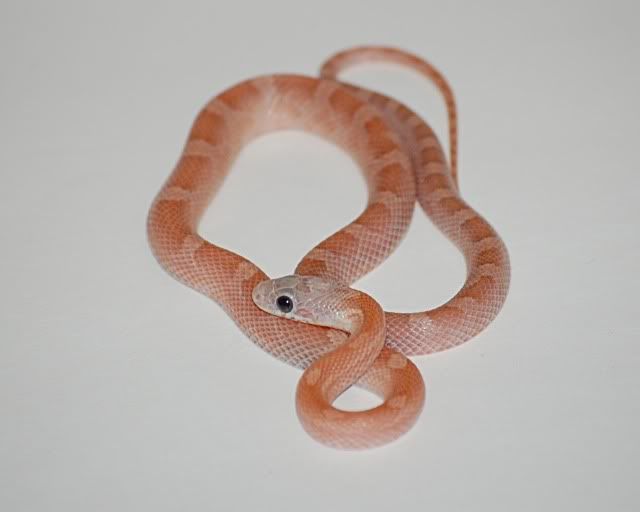Carpe Serpentis
Hybrid Snake Lover
"Genetic drift has a larger effect on small populations, but the process occurs in all populations — large or small. Genetic drift occurs because, due to chance, the individuals that reproduce may not exactly represent the genetic makeup of the whole population. For example, in one generation of a population of captive mice, brown-furred individuals may reproduce more than white-furred individuals, causing the gene version that codes for brown fur to increase in the population — not because it improves survival, just because of chance. The same process occurs in large populations: some individuals may get lucky and leave many copies of their genes in the next generation, while others may be unlucky and leave few copies. This causes the frequencies of different gene versions to "drift" from generation to generation. However, in large populations, the changes in gene frequency from generation to generation tend to be small, while in smaller populations, those shifts may be much larger. Whether its impact is large or small, genetic drift occurs all the time, in all populations. It's also important to keep in mind that genetic drift may act at the same time as other mechanisms of evolution, like natural selection and migration. To learn more about genetic drift, visit Evolution 101. To learn more about population size as it relates to genetic drift, visit this advanced article." http://evolution.berkeley.edu/evolibrary/misconceptions_faq.php#a7
One could therefore say that populations such as corn snakes represent a micro-population and are part of a larger macropopulation which includes all rats, kings, milks, etc. that are capable of interbreeding and creating fertile offspring.
When populations are recognized as sharing particular phenotypic characters these are referred to as constituting their phenotypic pattern, which, if not attributable to evolutionary parallelism or convergence of traits, may indicate genetic affinities with individuals and populations of similar phenotypic patterns. We have one phenotypic grouping of patterns that we label as our corn snake. Another population with different groupings we label as kings, or milks. I see these different groups as different or as similar if you will as I see different so called races of humans when dealing with corns, milks, rats, kings… etc. so long as they can interbreed and produce a viable fertile population in the same way that humans can do so regardless of race or population.
I see kings, milks, rats, etc. as forming a large macropopulation with each individual group forming smaller micropopulations. Each of these groups or micropopulations are potentially moving towards speciation. This however does not or can not be said to have happened until members of each micropopulation can no longer breed with each other. However, at this point in evolutionary time, the populations of each group have not drifted far enough apart to provide for reproductive isolation in any real or meaningful way so as to make reproduction impossible between the species due to changes in their dna (genotype incompatibility) making this impossible or even changes in physical structure (phenotype) .
One could therefore say that populations such as corn snakes represent a micro-population and are part of a larger macropopulation which includes all rats, kings, milks, etc. that are capable of interbreeding and creating fertile offspring.
When populations are recognized as sharing particular phenotypic characters these are referred to as constituting their phenotypic pattern, which, if not attributable to evolutionary parallelism or convergence of traits, may indicate genetic affinities with individuals and populations of similar phenotypic patterns. We have one phenotypic grouping of patterns that we label as our corn snake. Another population with different groupings we label as kings, or milks. I see these different groups as different or as similar if you will as I see different so called races of humans when dealing with corns, milks, rats, kings… etc. so long as they can interbreed and produce a viable fertile population in the same way that humans can do so regardless of race or population.
I see kings, milks, rats, etc. as forming a large macropopulation with each individual group forming smaller micropopulations. Each of these groups or micropopulations are potentially moving towards speciation. This however does not or can not be said to have happened until members of each micropopulation can no longer breed with each other. However, at this point in evolutionary time, the populations of each group have not drifted far enough apart to provide for reproductive isolation in any real or meaningful way so as to make reproduction impossible between the species due to changes in their dna (genotype incompatibility) making this impossible or even changes in physical structure (phenotype) .

